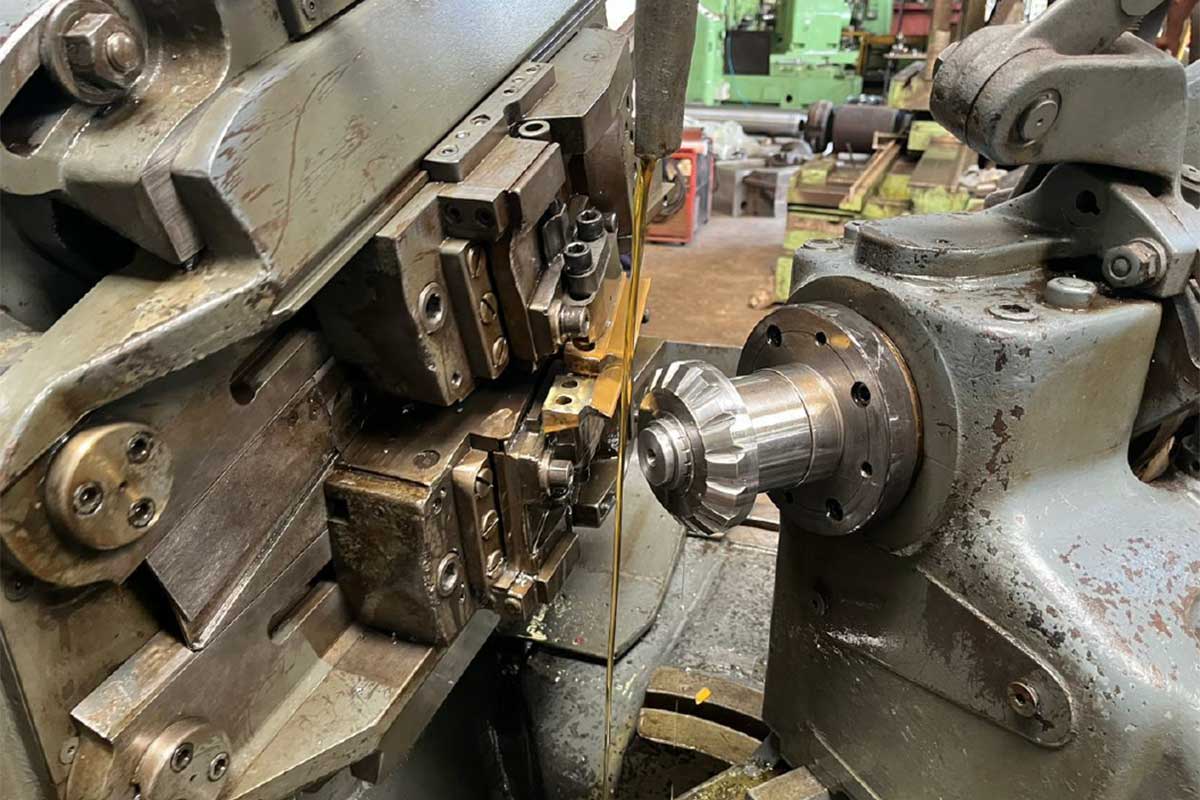
By: Dr Atul Kulkarni, Niranjan Upadhye
The rising demand for gears across a variety of sectors is anticipated to fuel the market for gear manufacturing in future years. With numerous companies offering a variety of products to meet the various needs of end consumers, the market is quite competitive. Based on the type of gear, the market may be divided, and Asia-Pacific is expected to dominate. The use of industrial automation is one of the main drivers fueling growth in the gear manufacturing market.
On the other hand, the gear cutting tool market is also expected to grow steadily in the coming years due to the increasing demand for gears in various applications, such as automobiles, aerospace, and industrial machinery. The market is highly competitive, with several players offering a range of products to cater to the diverse needs of end-users.
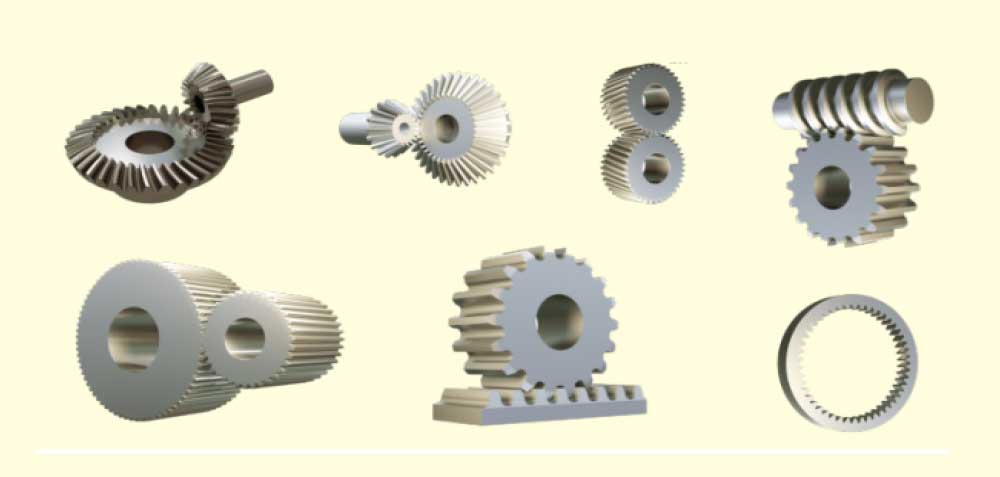
In 2021, the market for gear-cutting tools was estimated to be worth USD 700 million, and it was expected to grow with a CAGR of 1.9% in the coming years, to reach 785.45 million USD in 2027. However, between 2021 and 2026, the market is projected to develop at a CAGR of 5.7%, with the gear manufacturing market share estimated to rise by USD 74 billion, as reported by market research agencies.
Spur gears, helical gears, bevel gears, worm gears, and other types of gears can be used to segment the market Spur gears command the largest market share, followed by helical gears. Gear hobbing tools, gear shaping tools, gear grinding tools, gear shaving tools, and gear honing tools are the various types of gear-cutting tools available in the market. Gear hobbing tools have the largest market share, followed by gear grinding tools.
Region-wise, Asia-Pacific is expected to dominate the gear cutting tool market due to the increasing demand for gears in various industries. Some of the major players operating in the gear cutting tool market and gear manufacturing market include Sandvik, Kennamental, Kyocers, Gleason Corporation, Kapp Werkzeugmaschinen GmbH, Klingelnberg AG, Liebherr-Verzahntechnik GmbH, Mitsubishi Heavy Industries, Ltd., and Samputensili S.p.A., BMT International S.A., Gleason Corporation, Klingelnberg AG, Koyo Machinery USA Inc., Mitsubishi Heavy Industries, Ltd., and ZF Friedrichshafen AG.
The primary function of the gear system is to transmit the motion and require torque with greater flexibility to adapt to different needs. The gear optimization study not only considers gear ratio, but also considers strength, weight, cost, noise, energy loss, etc. These factors influence the selection of workpiece material, manufacturing process, and cutting tool. Gear cutting is one of the processes of manufacturing in which the desired shape is imparted to the workpiece by removing the surplus material. Conventionally, this surplus material from the workpiece is removed in the form of chips by using an appropriate cutting tool.
For a given work material, success in gear cutting depends on the proper selection of cutting tool material, machine setting, and its geometry. The term machinability is often used to describe the ease or difficulty with which a material can be machined. A wide range of cutting tool materials and work materials are available with different combinations of properties, performance capabilities, and costs. The machined surface quality has a significant impact on gear-matching accuracy, wear resistance, fatigue resistance, corrosion resistance, and transmission performance.
In 2021, the market for gear-cutting tools was estimated to be worth USD 700 million, and it was expected to grow with a CAGR of 1.9% in the coming years, to reach 785.45 million USD in 2027. However, between 2021 and 2026, the market is projected to develop at a CAGR of 5.7%, with the gear manufacturing market share estimated to rise by USD 74 billion, as reported by market research agencies
The manufacturing accuracy of gears has a direct impact on the machine’s transmission efficiency, noise, motion accuracy, and service life. Several researchers have worked on improving the surface quality and productivity of gear manufacturing processes. However, limited research is available on the selection of cutting tool material and appropriate tool coating for improvement of gear cutting performance. Cutting tool material and tool coating plays a very important factor in improving the productivity of gear manufacturing.
The creation of novel tool materials has been hastened by the pressures of economic competitiveness and technological evolution. A variety of various materials have been tested for this purpose. The tool materials that have endured and are currently commercially available are those that have proven to be the best at meeting the demands placed on them in terms of tool life, rate of metal removal, surface finish produced, ability to give satisfactory performance in a variety of applications, and cost of tools made from them. These tool materials should possess some important properties such as hot hardness, toughness, wear resistance, and chemical stability.
Different tool materials available in the market include high-speed steel (HSS), cemented carbide, cermet, ceramics, cubic boron nitride, and diamond. Despite these materials, HSS and cemented carbide tools/cutters are the most demanding cutting tools used in gear cutting. Both materials have limitations on thermal stability during cutting, which eventually affects the production rate.
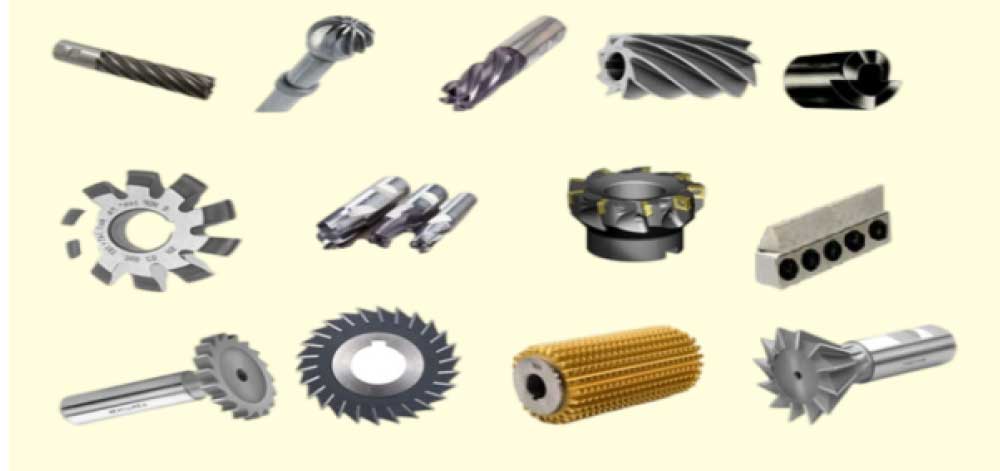
It was observed that during cutting, the surface and bulk requirements of a cutting tool and work materials are different and conflicting. Generally, the surface should have low thermal conductivity. This is because the temperature generated during cutting should be carried away by the chips and not allowed to penetrate the cutting tool. On the other hand, the bulk should have high thermal conductivity to carry away the heat that penetrated the cutting tool in severe cutting conditions. Coated cutting tools contribute highly to the conservation of coating materials, because coating generally requires a very thin film to be deposited on the cutting tool substrate, which is usually a few microns thick.
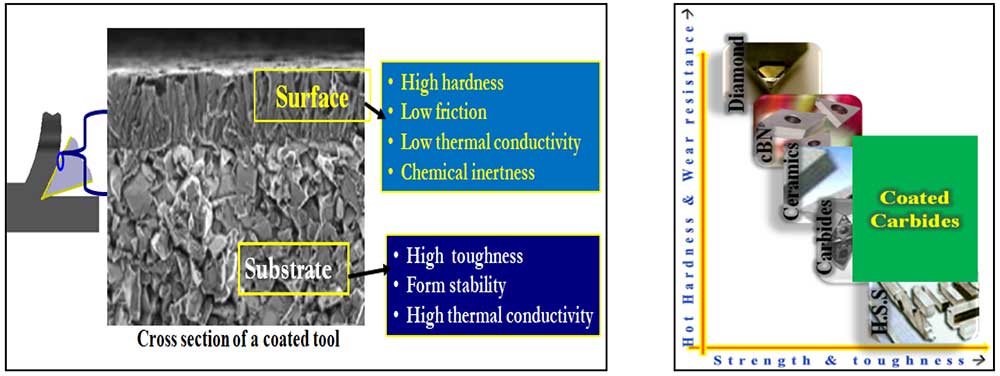
The specific purposes of coating are to reduce cutting forces, reduce cutting edge temperature, increase abrasion resistance and act as a diffusion barrier. The figure shows the different requirements for cutting tools. It has been proven by many researchers that HSS and carbide cutting tools with different coating materials has increased productivity and tool life in gear cutting. The different cutting materials with different types are deposited on the cutting tool, as shown in the table below. The popular coating techniques are Chemical vapor deposition (CVD) and Physical Vapour deposition (PVD).
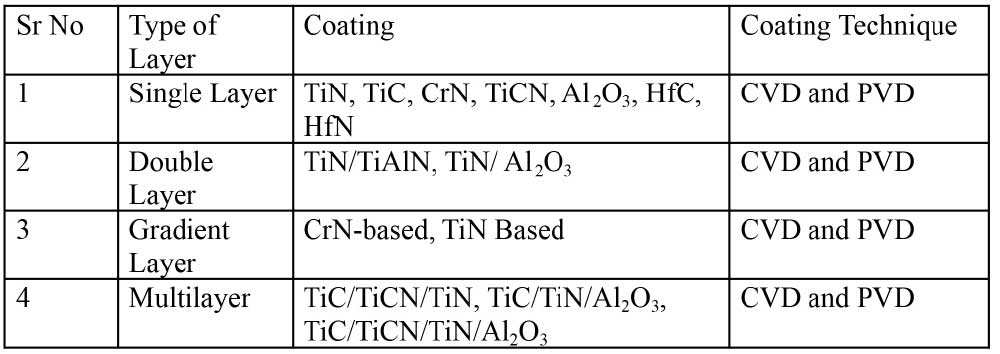
Below are the details of a machinability study, which was done at Ratna Gears Pvt Ltd. Ratna gears (https://www.ratnagears.com) is a Maharashtra, India-based ISO 9001:2000 certified company dealing in manufacturing and supplying a comprehensive range of gears such as spiral bevel gears, spur gears, helical gears, worm wheels, and washing machine gearboxes.
The present study was conducted during the process of Bevel gear manufacturing, to measure how tool coating contributes to an improvement in productivity. The Gleason Straight Bevel Gear Planer was used as a machine tool, and HSS M2 Gleason planer tool blade was used as a cutting tool. The following figure shows the machine tool with the product and another figure shows the coated and uncoated HSS tool which was used for bevel cutting.
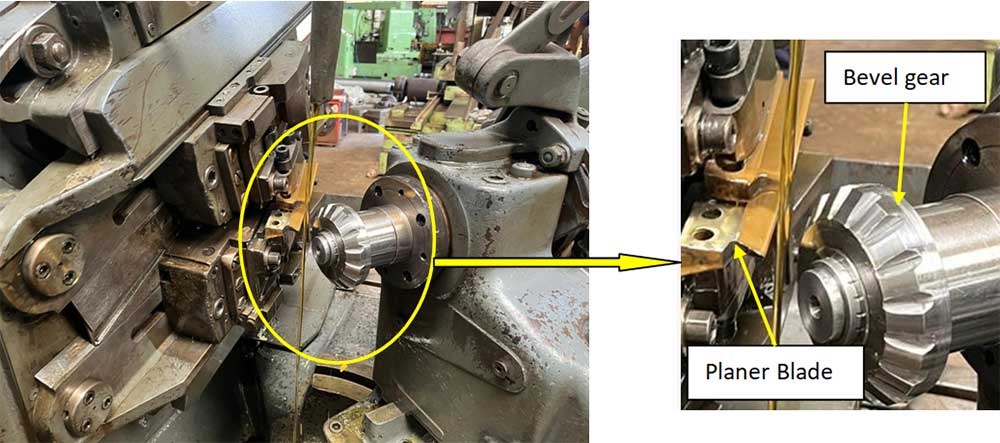
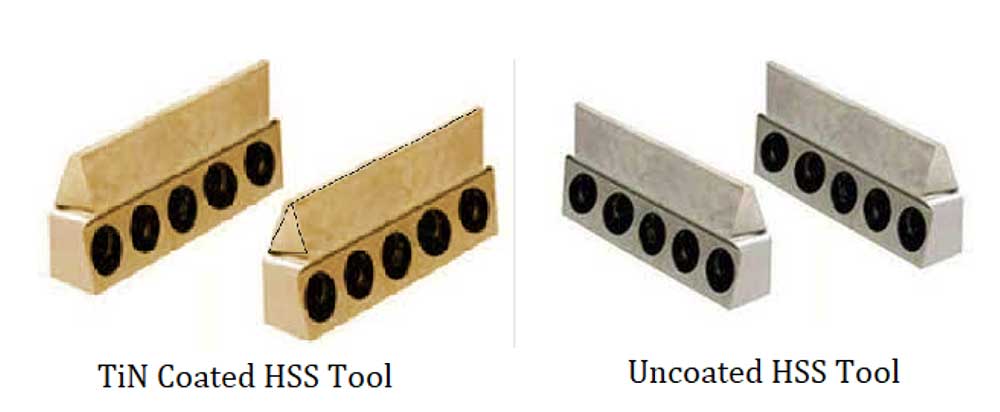
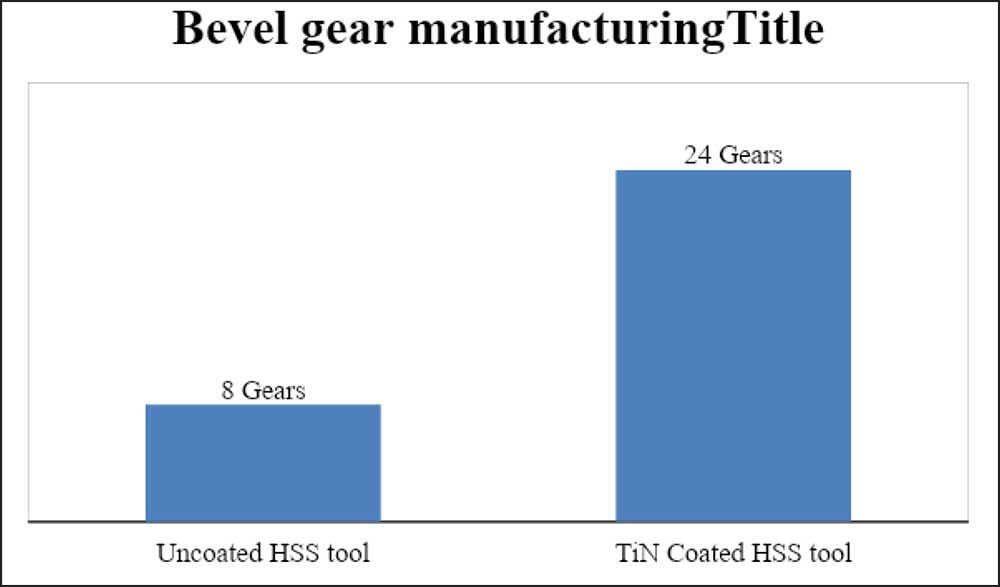
It was observed that the uncoated tool produced around 8 to 9 bevel gears per setting. The tin coated tool (the coating was done at the Pune Carbide company at Pune, which has Cemecon coating systems), on the other hand, produced 24 to 26 bevel gears per setting with the same cutting parameters. This is a production increase of almost three times.
This is mainly due to the deposition of wear resistant tin coating. This coating acts as a thermal and chemical barrier. In addition, the coating also acts as a lubricant due to the low coefficient of friction. It has better thermal stability compared to the uncoated tool, which results in an increase in the life of the tool. It further increases productivity.
Further study is needed on optimization on the parameters, but the study proves that tool coating increases productivity.
The specific purpose of coating is to reduce cutting forces and cutting edge temperature, and increase abrasion resistance and act as a diffusion barrier. It has been proven that HSS and carbide cutting tools with different coating materials showed increased productivity and tool life in gear cutting
 The results of the study are amazing. It proves the importance of tool coating. This finding will help us in the future. We will implement it across all types of gear cutting tools.
The results of the study are amazing. It proves the importance of tool coating. This finding will help us in the future. We will implement it across all types of gear cutting tools.
–Nitesh Mahajan, Director, Ratna Gears
 The author, Niranjan Arun Upadhye, is an accomplished leader in supply chain management, operations & business development, and has over 30 years of experience across industries
The author, Niranjan Arun Upadhye, is an accomplished leader in supply chain management, operations & business development, and has over 30 years of experience across industries
 The author, Dr Atul Kulkarni, is working as a Professor and Dean of Industry Relations in Vishwakarma Institute of Information Technology since 2007.
The author, Dr Atul Kulkarni, is working as a Professor and Dean of Industry Relations in Vishwakarma Institute of Information Technology since 2007.